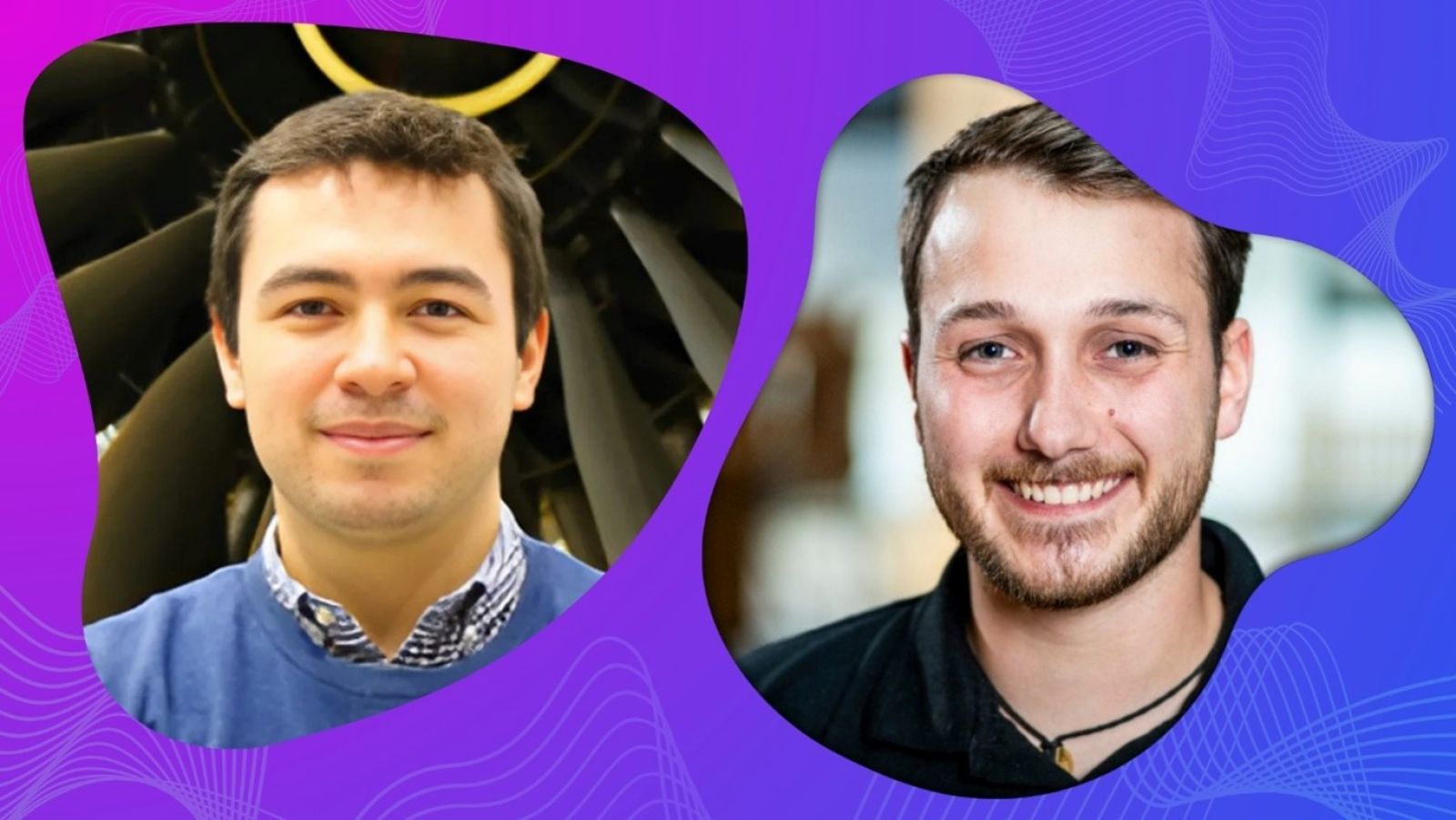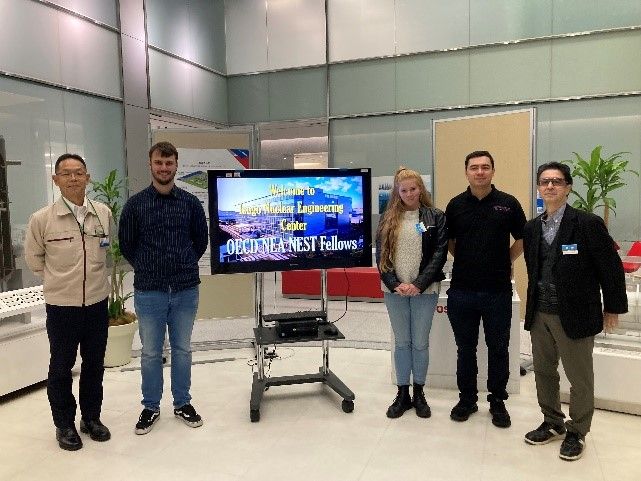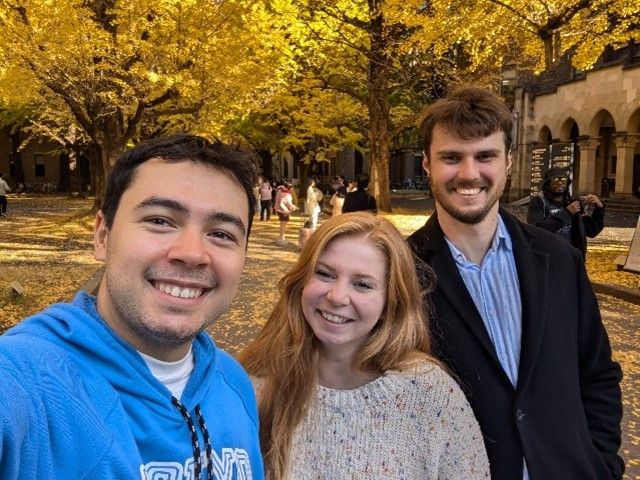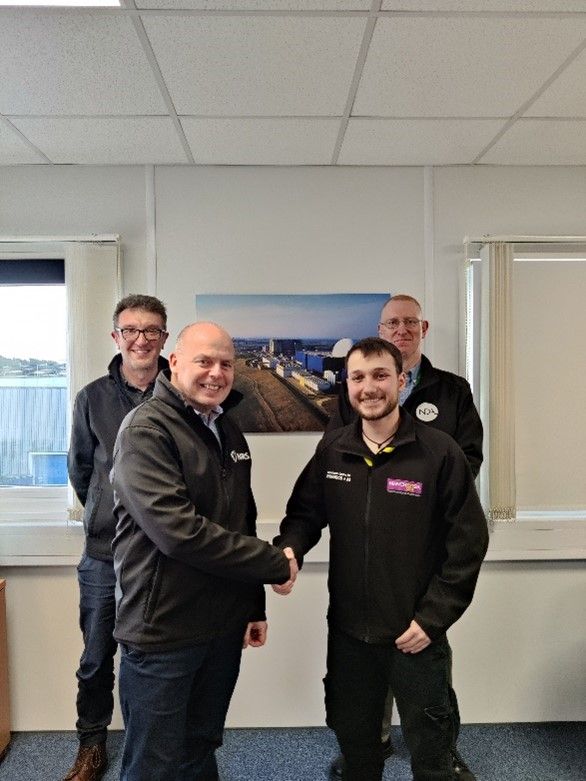CRADLE researchers complete secondments with external partners

As part of the Prosperity Partnership’s goal of developing invaluable talent across the robotics and autonomous systems sector, two CRADLE researchers recently completed secondment assignments with various external academic and industry partners.
Christopher Bishop’s (PDRA WP5) Secondment in Japan as part of the NEST Fellowship Scheme


Photos: (Left: At Toshiba Isogo Nuclear Engineering Centre. Right: NEST Fellows under Ginkgo Trees at University of Tokyo)
Christopher Bishop, a researcher in CRADLE Demonstrators (WP5), successfully secured a Nuclear Education, Skills and Technology (NEST) Fellowship—an initiative created by the Nuclear Energy Agency (NEA) to promote collaboration between academia and industry. As part of this fellowship, Chris undertook a research secondment at the University of Tokyo in Professor Yamashita Atsushi’s laboratory, joining Dr Nobuto Matsuhira’s project on motion planning for heterogeneous robotic teams operating in environments with narrow corridors and limited network connectivity. The project addresses challenges relevant to nuclear decommissioning sites, particularly Fukushima Daiichi.
During the secondment, Chris contributed to the development of a robotic architecture and motion planning algorithm aimed at enabling efficient navigation of multiple robots in Wi-Fi-restricted environments. The system dynamically prioritises tasks using a publish–subscribe protocol, ensuring seamless coordination between robots in confined spaces. This capability is essential for tackling operational challenges in nuclear environments, where limited communication and constrained spaces pose significant hurdles.
The project also involved enhancing a framework for image data collection and sharing, allowing robots to autonomously capture, upload, and analyse images at critical locations. This reduces the need for human involvement and supports efficient monitoring and inspection of nuclear facilities. The system demonstrated its capabilities during tests in Fukushima Prefecture, where robots successfully patrolled and uploaded data to cloud-based platforms for real-time analysis by remote teams.
Reflecting on the experience, Chris said:
“This secondment was invaluable in advancing my understanding of the challenges faced in nuclear environments. The insights gained will shape our research and ensure the outcomes are directly applicable to industry needs. I am particularly grateful for the opportunity to collaborate with JAEA and UTokyo researchers.”
In addition to the technical work, Chris and other NEST Fellows participated in the FDR 2024 workshop and visited the Fukushima Daiichi site, gaining first-hand insight into the complexities of nuclear decommissioning. They also toured the Toshiba Isogo Nuclear Engineering Centre, learning about cutting-edge decommissioning techniques and technologies.
This secondment represents a significant milestone in Chris’s academic and professional journey, providing both theoretical knowledge and practical experience to address pressing issues in nuclear decommissioning.
Joshua Bettles’ (PhD Student WP5) Secondment to NRS Sizewell A


Joshua Bettles, a CRADLE Demonstrators Associate Postgraduate Researcher and RAICo Junior Fellow, recently completed a three-week secondment with Nuclear Restoration Services (NRS)—part of the Nuclear Decommissioning Authority (NDA) group, which co-funds his studies—at the former nuclear power station, Sizewell A. The placement aimed to bridge the gap between industry and academia, highlighting how robotics could support the clean-up mission on site.
During the placement, Joshua joined Radiological Monitoring Persons (RMPs) in routine health physics monitoring and waste characterisation tasks. This gave him hands-on experience detecting contamination in various radiological and contamination-controlled areas. His PhD research focuses on developing a system for monitoring objects and humans for potential contamination using collaborative robots (cobots). The secondment allowed him to observe first-hand how personnel are monitored when crossing contamination control barriers. Joshua shared his reflections on the experience:
“One of the most interesting aspects of my placement was something some might consider mundane—watching people being monitored by a Radiological Monitoring Person! This directly informs my research, which aims to design a robotic system for monitoring contamination on humans. I appreciated this insight, particularly in terms of human–robot interaction, which the final system will have to carefully navigate. The placement ensures my research remains focused on developing an industry-relevant product, helping me to ‘think like a monitor’ and better design a system that mimics real-world radiological monitoring processes.”
“I’m very grateful to those I worked with for sharing their views on the future of radiological protection and how innovation—particularly robotics—could support their work and reduce the demand on this resource-constrained profession.”
This secondment was coordinated by Michael Carr (NDA Radiation Protection Manager) and Gareth Ward (Sizewell A Waste Manager) in support of Joshua’s PhD, which is co-funded by NRS and the Engineering and Physical Sciences Research Council (EPSRC) through an Industrial Cooperative Awards in Science & Engineering (iCASE) voucher.